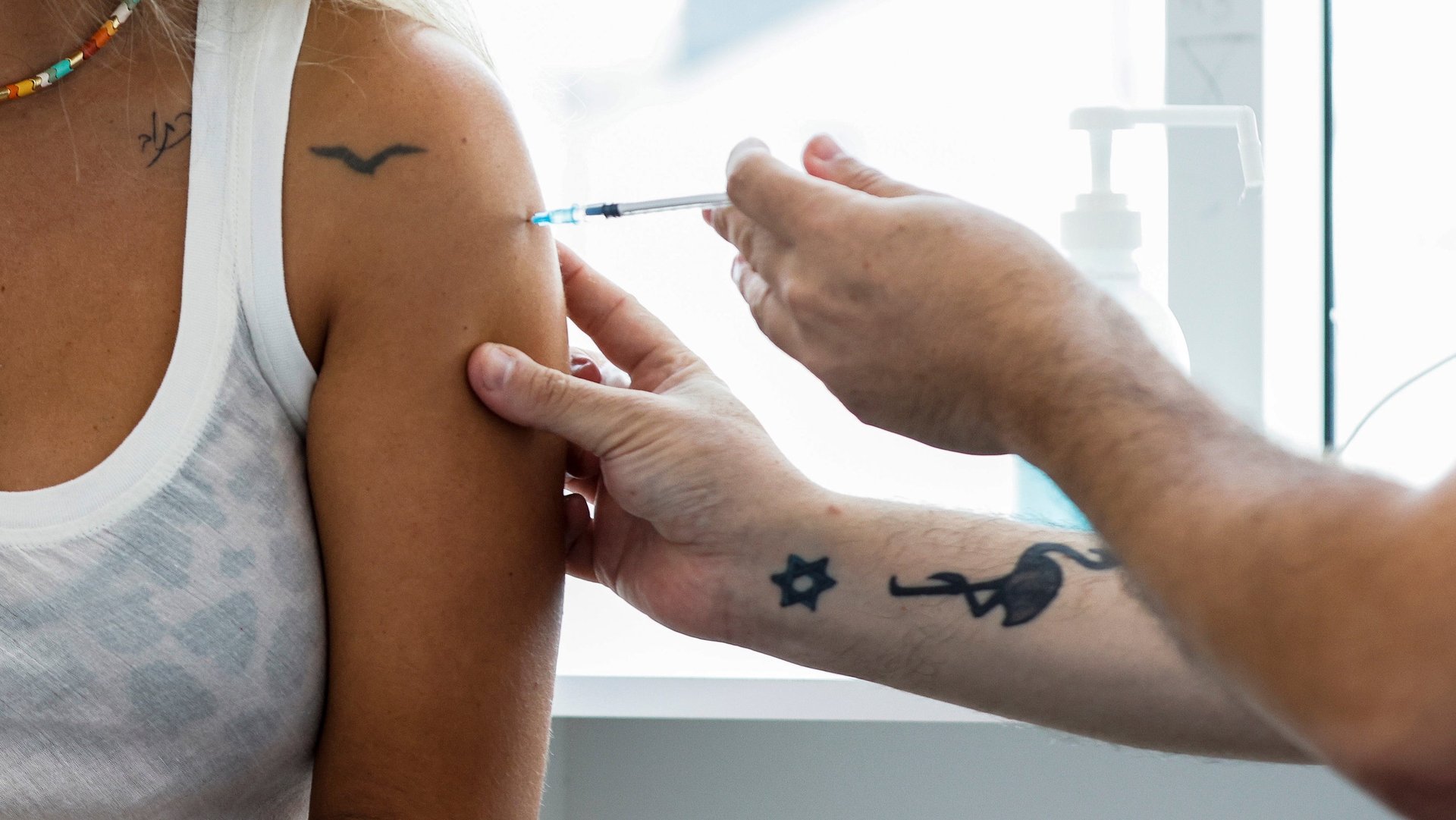Nudging the numbers
Hi Quartz readers,


Hi Quartz readers,
When Covid-19 vaccines were first rolled out in the US, government officials and corporations spent months using gimmicky tactics to convince the hesitant, from paying out cash for shots to giving away free donuts. As it turns out, few of those methods worked.
For all its downsides, the pandemic created an unprecedented opportunity for behavioral economists to test what’s known as “nudging,” or setting up choices that make it easier for people to do the right thing. These are tactics like putting fruit instead of junk food at a store’s eye level, and in the past they’ve been effective—including at boosting flu vaccination rates.
But research increasingly suggests that more forceful policies are needed to combat the polarization and disinformation swirling around Covid-19 vaccines. One recent study, published by the National Bureau of Economic Research, followed members of a Medicaid program in California from mid-May to mid-July. Participants were asked to fill out a survey and watch informational videos about Covid-19, then researchers randomly selected some to receive a cash reward of $10 to $50 if they got a shot within two weeks. The cash incentive didn’t make a difference. Another paper, published in JAMA Health Forum, found no variance in vaccination rates between US states that held vaccine lotteries and those that did not.
This doesn’t mean nudges are useless. One research paper found that simply texting reminders to get the vaccine had an impact. But after months of trying a hodgepodge of nudges, policymakers should take note of the generally lackluster results. Had we been more diligent about studying what works in advance, public health researcher Alison Buttenheim told Quartz, we might have rolled out mandates much sooner. —Nathan DiCamillo
Talking points
🎁 Merck is giving away a Covid patent. In a savvy move, the US drugmaker will allow low- and middle-income countries to produce a generic version of antiviral drug molnupiravir.
🚢 The supply chain needs seafarers, who need vaccines. Seafarers are tied to the vaccine constraints of their countries, which are leaving some stranded on shore and others stuck at sea.
💉 African countries are facing a syringe shortage. Unicef has projected a shortfall of up to 2.2 billion syringes globally in 2022 due to increased demand, supply chain disruptions, and “syringe nationalism.”
😬 New US travel rules exclude two popular vaccines. Russia’s Sputnik V and China’s CanSino vaccine, neither approved in the US, have been administered in several countries.
👋 Covid-19 forced 3 million US baby boomers into retirement. At least for now: Some of those “excess” retirees may take jobs again when workplace conditions improve.
📦 California can barely contain itself. To ease port congestion, Long Beach and Los Angeles eased zoning rules that bar truck yards from stacking containers more than two high, irking local residents.
🚇 Is hybrid work killing the monthly transit pass? As workers head to the office less often, public transportation agencies are putting time-based transit passes on the chopping block.
🧘 The Federal Reserve is paying attention to burnout. A mention in the most recent “Beige Book” suggests the mental health of workers is now being factored into the agency’s US economic outlook.
Remotely disruptive
As jarring as the transition to remote work has been, one labor economist says it’s nothing compared to what’s coming. Adam Ozimek argues that the next phase of remote work will transform entire economies by forcing companies to allow working from home. Here’s what you can expect:
- Formalized knowledge and processes. In a remote-work world, it’s not efficient to rely on oral tradition in order to pass down key knowledge. Expect less PowerPoint culture and more written culture.
- More asynchronous work. We’re already finding that some types of work don’t really require synchronous coordination. Software—and management changes—will help improve the alternatives.
- A geography/opportunity decoupling. Going forward, the success of any given place will be less determined by the strength of its local labor market. Time to live in your favorite ski town!
Words of wisdom
“Voice is intuitive for patients, regardless of age or tech savviness, while care providers can streamline tasks to make more time to care for those patients.” —Peachy Hain, executive director of Medical and Surgical Services at Cedars-Sinai
Amazon has spotted an opportunity in US healthcare: hospital room bedside tables. Last week, the company announced plans to start installing Echo Show devices in partnership with several US hospital systems and senior care centers.
Covid-19 is at least partly behind the decision. During the early days of the pandemic, Amazon donated Alexa devices to hospitals’ Covid wards to enable video communication between patients and family members.
✦ One robot to keep out of hospitals. At a US Army expo last month, Ghost Robotics and Sword Defense unveiled a gun-toting robot dog that represents “the future of unmanned weapons systems.” Time to panic? Maybe! In this Forecast for Quartz members, we look at how drawing lines around robotic weapons could be the best path for humanity.
If you’re not yet a Quartz member, try it free for seven days.

Le pain
France’s most important everyday staple could soon get pricier. The cost of the country’s beloved baguette may rise by €0.05 to €0.10 ($0.06 to $0.12) in the coming weeks, says Dominique Anract, president of the French Confederation of Bakeries and Pastry Shops. “All the warning signs are flashing red,” Anract told FranceInfo, citing rising costs of wheat, flour, energy, worker salaries, and packaging. For context: The average price of baguettes rose by just €0.23 in the past 20 years.

Elsewhere on Quartz
- The price is wrong: The Treasury bond market is bracing for more inflation
- Ghost of Christmas presents: Amazon is determined to save Christmas
- Unelected official: Is Mark Zuckerberg the de facto mayor of the metaverse?
- Rough landing: Why Ryanair may delist from the London Stock Exchange
- I’ve made a huge mistake: How to ask for your old job back
Our best wishes for a healthy day. Get in touch with us at [email protected], and live your best Quartz life by downloading our iOS app and becoming a member. Today’s newsletter was brought to you by Nathan DiCamillo, Walter Frick, Lila MacLellan, Courtney Vinopal, and Kira Bindrim.